When I started spoon carving about ten years ago, I had to invent the wheel myself. To see an example of a good spoon, I looked a lot in (Swedish) museums. I also once and again bought a spoon from someone who was very good at it. Now with the flight of social media, information is much easier to share and find. The number of spoon carvers is increasing and with it more and more specialized tools or aids are becoming available. An example of this are spoon templates. The trend of 2020. So it’s about high time to take a closer look at this topic. In this blog I list the pros and cons of templates for you.
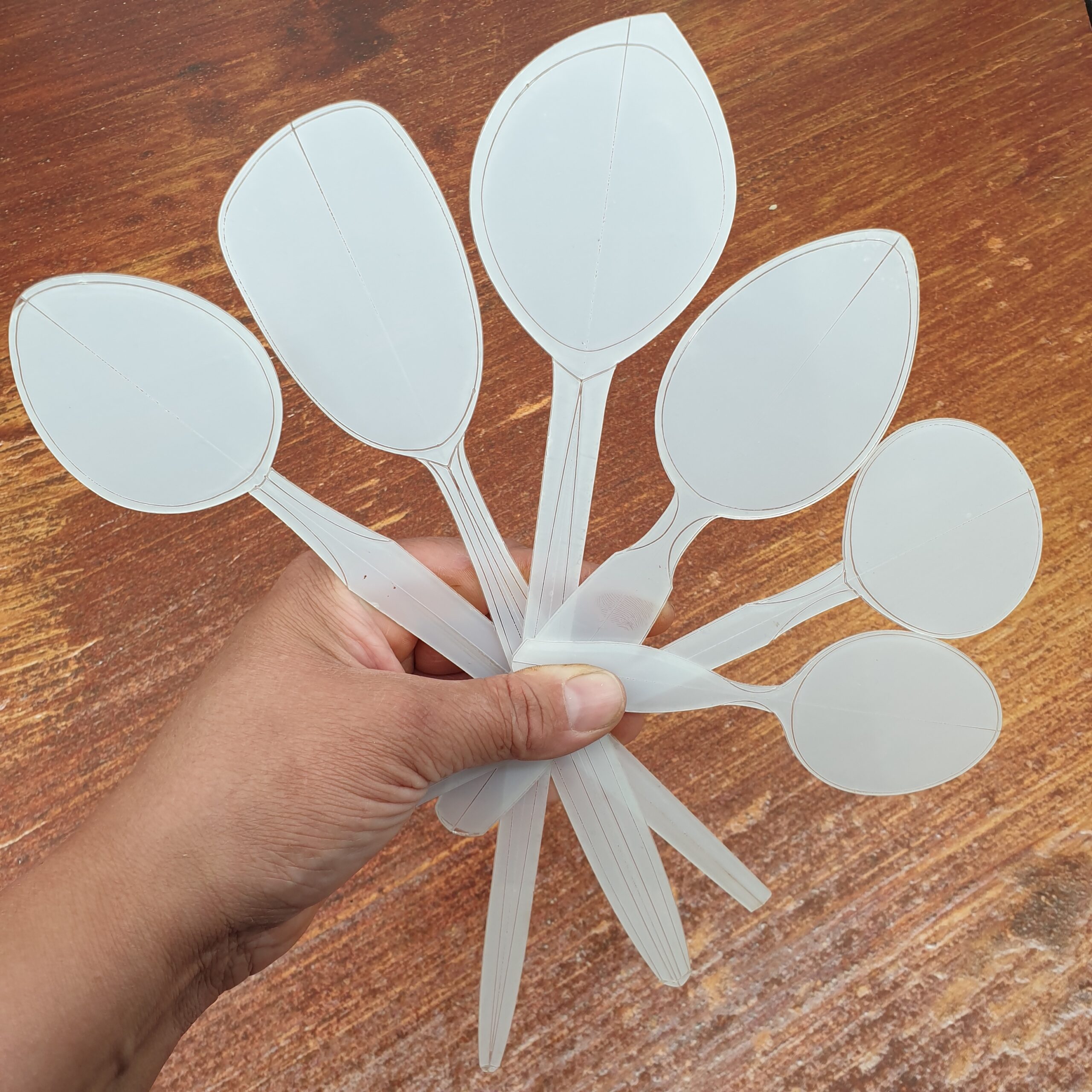
The pros and cons of spoon templates
Opinions vary widely in the spoon scene about the sense and nonsense of templates. This blog is based on my own experiences with templates and is filled with a good dose of personal opinion. And of course I’m also very curious what you think about it!
Spoon templates are hot hot hot!
Templates seem to be the new fashion item in the world of spoon carving. But they are also controversial. They have pros and cons. But the fact that spoon templates are hot is evident from the fact that they are increasingly offered. Both free and for sale. For example, Rise Up and Carve has the monthly challenges with a ‘show and tell’ as the closing event. The Spooncrank also sells more and more different models. Topped off with ‘the book of spoon templates vol. 1’. Including the characteristic designs of ‘well-known’ spoon carvers.
Pros and cons
Where for one templates are a diminution of creativity, a limitation of the organic development in your designs and a stumbling block in training your motor skills and memory. They are seen as an opportunity to delve into a ‘new’ model by others. A model with shapes and techniques that you do not naturally use yourself. And so templates provide a challenge to dig in and develop yourself further. I personally believe that there is still a lot of room for personal input and creativity within a spoon template.
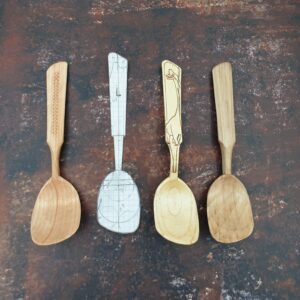
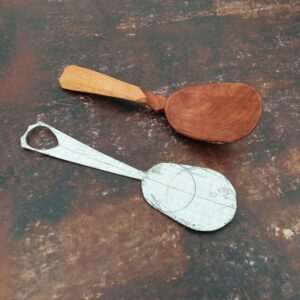
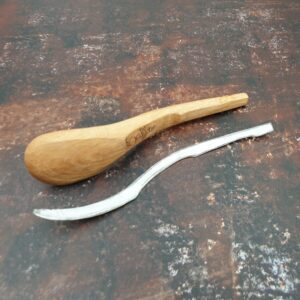
Shape replicability
I find spoon templates, especially when used by the same spoon carver, a very useful tool when carving the ‘same’ spoon. Think of carving production spoons or a set of four for example. I use them regularly for that reason. Especially when I have carved a spoon that I am very satisfied with, I make a template of it before the spoon goes to its new home. So I will be able to make it again and again. Also, by using a template I can transfer more difficult patterns to the spoon easy, quickly and accurately. This allows me to carve that specific shape more often and faster. Rapidly repeating the same form or technique means that you learn faster and therefore you will also train your motor memory faster.
Variations on a theme
The fact that a certain shape is (easily) repeatable does not mean that the design does not develop over time or turns out the same every time. If only because the wood itself is an organic material. Wood is not as predictable and constant as we sometimes would like. Often there is an inclusion or knot hidden, forcing you to adjust the design slightly. But regardless of what the wood determines, I regularly adjust my templates. Simply because my ideas about the ‘perfect’ shape or proportion have changed. But I also vary in shape and appearance within a template. Where sometimes it is the challenge to make a set of ‘the same’ spoons, at other times it is to make a set of spoons that clearly belong together, but where each spoon is unique and easily identified by its owner (and others). By playing with the side profile, micro details (micro finials), faceting, relief carving, chip carving, kolrosing and other finishing and decoration techniques, you can still make many different unique spoons within the same template.
When not to use a template?
If you want to carve an organic spoon, where the grain direction of the wood determines the shape, I think a template is more of a limitation than a tool. In those cases I sometimes use a template and then manually adjust the lines to the woodgrain. But in general, when this is the case, I am convinced that you get a much stronger and more expressive design by drawing directly on the wood. Or even by not drawing at all and freeing the spoon from the wood directly.
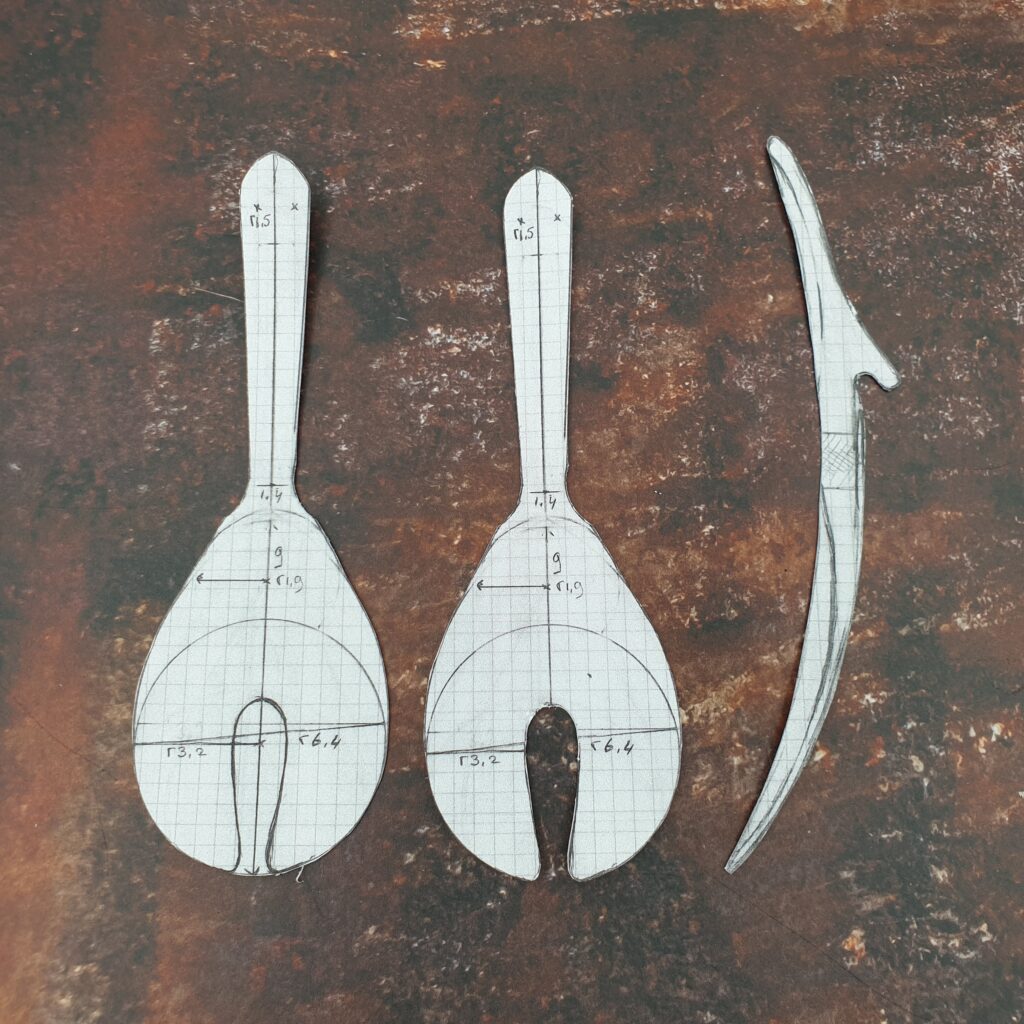




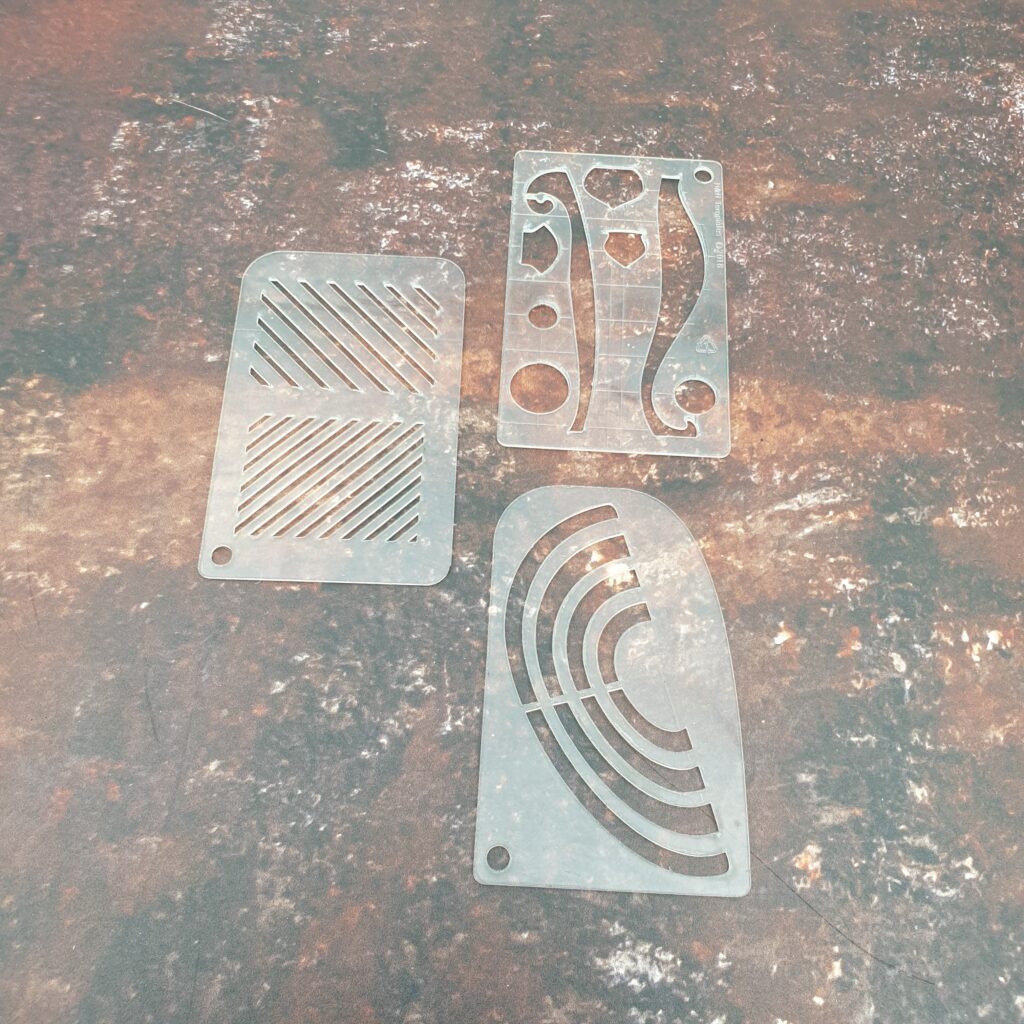

Other types of spoon templates
The spoon templates discussed so far are have been all templates in which the profile (at least of the front view) has been determined. Another way to use templates is to create an intermediate shape from billet to blank. A slice or slab of wood, as it were, intended to be able to freeze or seal as much wood as possible for later use. In this way you always have wood in stock, where you can carve a large (I do not want to say unlimited) number of different spoons according to the insight or need of that moment. It’s quite frustrating to thaw out a blank and find out that you’re doing things a little differently these days. Then, it is a pity to discover that this shape can no longer be carved out of the blank you have. Because the angle can no longer be adjusted or because the blank is too thin or narrow at certain points.
The slice or slab is generally a shape that still takes you back to the chopping block. This one is therefore not a ‘ready to carve’ kind of template. Unless you feel like a workout, and therefore you can still use it in all directions. Finally, you can also use templates for details or finishing. For example, to vary the shape of the bowl or to draw guides for chip carving or kolrosing to just give some examples.
Make your own spoon templates
Those who like to convert their own spoons into a template do not need to be a good digital drawer or have a laser or 3D printer. If you normally draw your spoons freehand on your piece of wood and you are very satisfied with a certain design, you can also draw it on paper. If necessary, just trace the spoon and clean up the lines. For those who like to work a bit more methodically, it can help to learn a thing or two about drawing geometric shapes with a compass and ruler. If you find it difficult to draw the concave and convex shapes of the handle, for example, a curved ruler can offer a solution. These come in different shapes and sizes.
Free download
If you like to carve a spoon from a template, you will find a free download of one of my models here. I would really enjoy seeing how you translated the template into a spoon. So join LepelLeut (in Dutch) or send me a message. If you have any questions about creating templates or have any tips and tops, let me know!
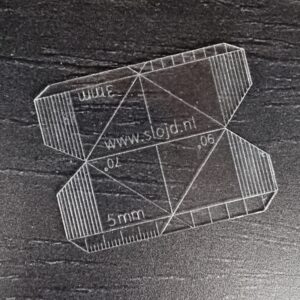
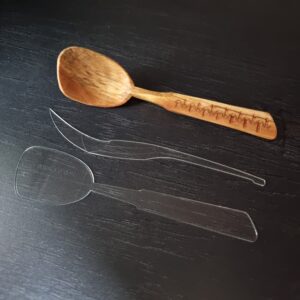
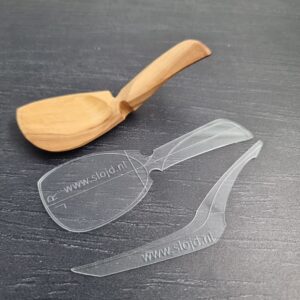
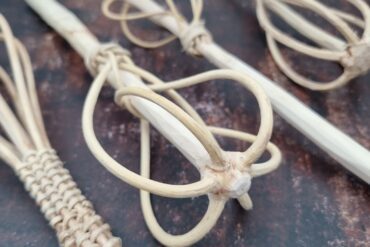

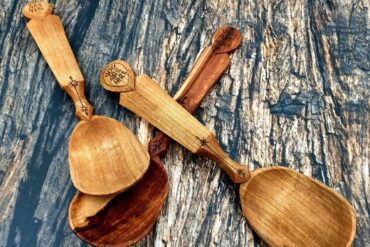
Interesting article, thank you. I have tried using a template but somehow once I’m rough shaping the billet it goes out the window. As a consequence I now rarely even draw on the billet and just see where the grain takes me! Lastly, I have never been asked to make a set of spoons for anyone, if I did I think I would say that they will be similar but all unique like us carvers!
Hi Terry,
Thank you for sharing your process. Like you say we are all different and with that we differ in our approach on carving spoons! 🙂 It’s very nice to read how others go about it.
Happy carving, Carolina